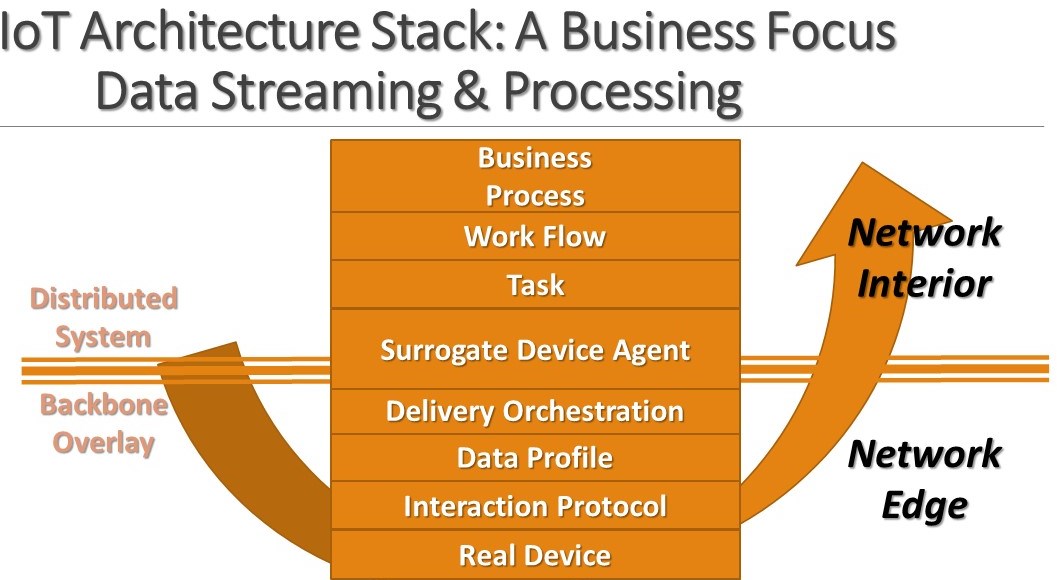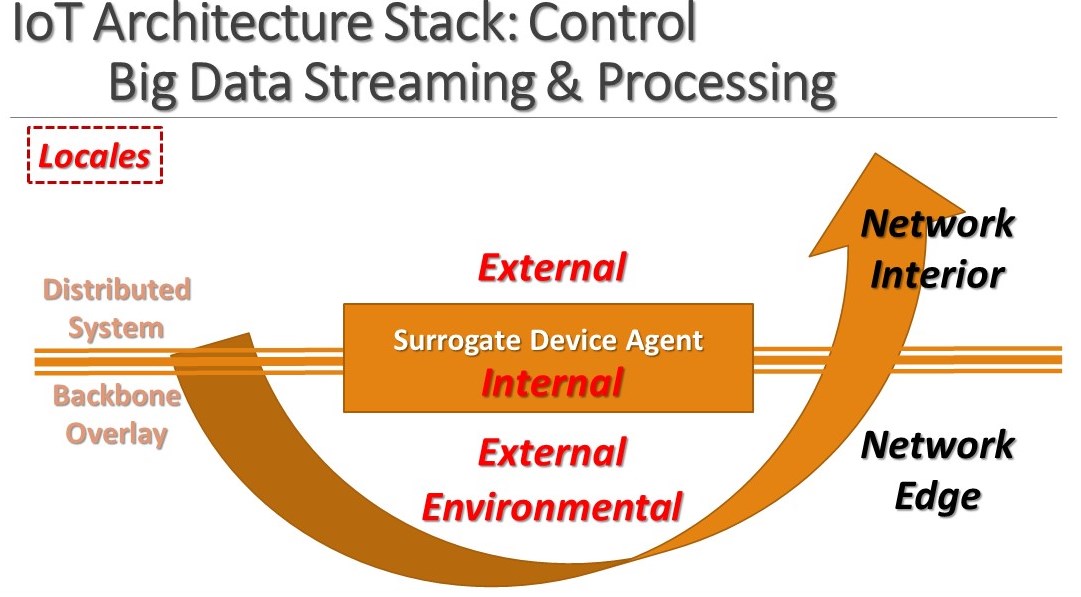
People and organizations profiting from change and complexity
To Contact Us:
95 Dublin Drive
Phone: 925.788.6076
Pleasant Hill, CA 94523
USA
What is a New Global Enterprise?
Going forward, the new dominant order in each economic sector encompasses both services and production alike.The Developed World is, in large part, Cyberian--a combination of people, processes and automation.
Constant scaling is required--up, out or down with equal ease, and all is market driven.
In the Darwinian sense, selection is based on adaptability and flexibility rather than number, size or strength.
Frequent radical transformations may be required as markets grow efficient at an ever increasing rate.
It comes down to “Consolidate or be consolidated. Change or die.”
NGE aspires to be such an organization.
What is our current focus?
2016: Up, Up and Away!!
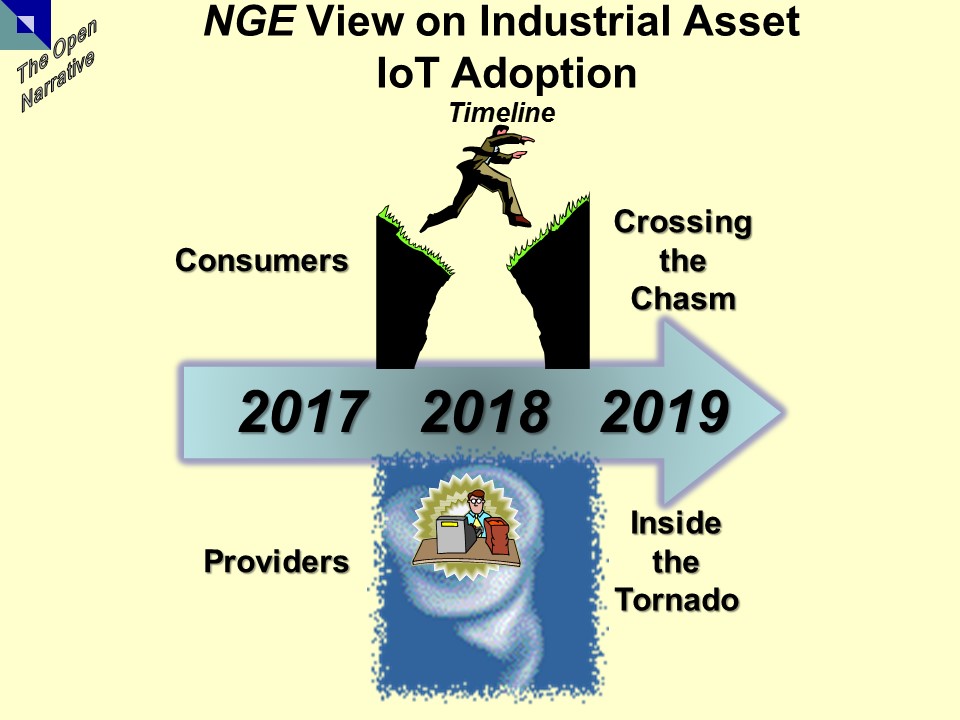 |
New Global Enterprises are investing in the operational readiness of Industrial IoT. This is led by Old Global Enterprises, like GE and IBM.
The current focus is on production grade Software Defined Secure Content Aware Networks (SD-SCANs).
We will realize this vision as we distribute Supply Chain Analytics, LLC (SCA)'s pilotable Analytic for capital allocation. This Analytic is called CAP:FER® branded under SCA™ within Management of Forklift Fleet Economic Replacement. Our current view is that, in 2017, Forklifts and IoT are in the Geoffrey Moore early adoptor stage. 2018 will be the year when Moore's Chasm will be crossed. This implies, in Moore's terms, that 2018 is the year "Inside the Tornado" when IoT organizations will begin with hypergrowth and realize substantial cost savings, greatly increased revenues while building sustainable competitive advantage. From a consuming organization standpoint, this translates into a cautious adoption of these old and new technologies and methods to address new issues of internal and external IT data handling. With Clouds, IoT is moving towards the sourcing of workload handling on a dynamic basis within protected dark SD-SCANs of assets. |
Industrial IoT: Forklift Scenario and Business Case
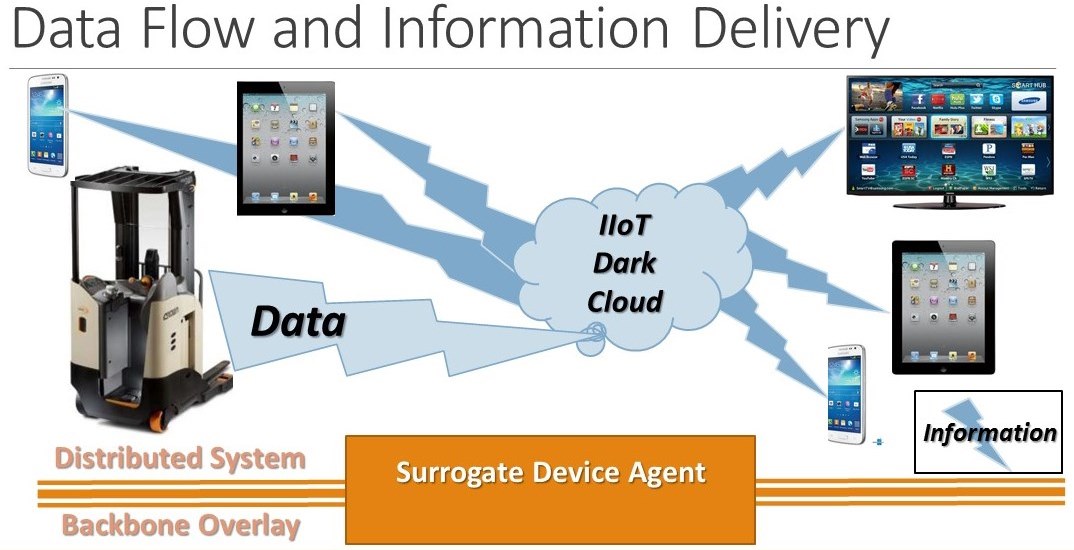 |
For a business case description of the culmination of the last 30 months of
NGE activities in the Industrial IoT space. It is about Information Deilvery to actuate Knowledge of Decision Makers.
These Decision Makers use their Wisdom to choose the best options for Actions.
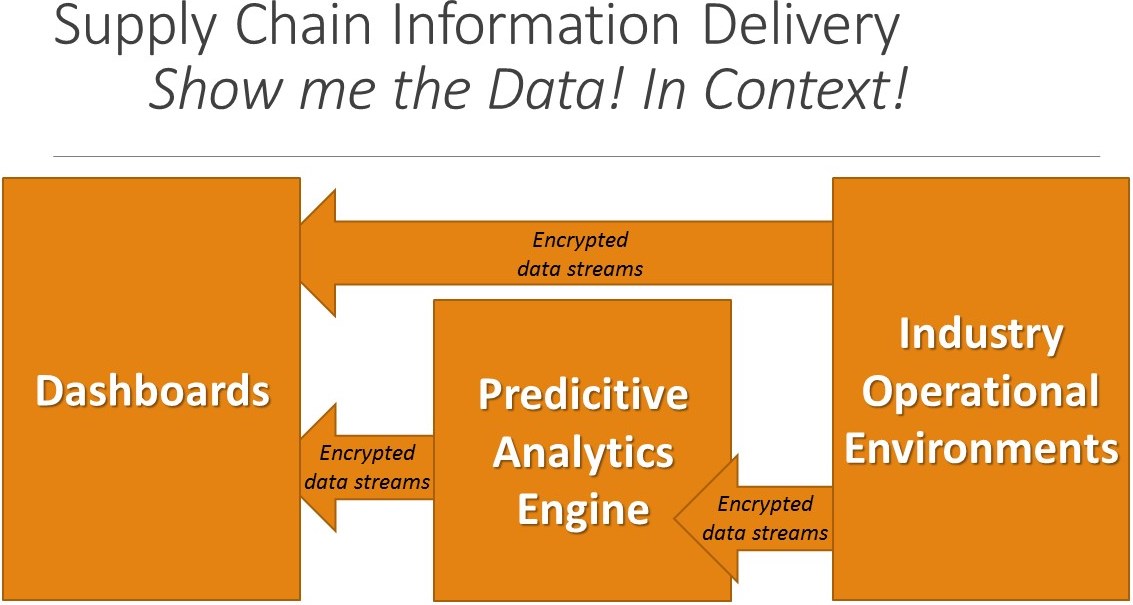
|
Industrial Asset Management
|
Each stage in the figure to the right is an opportunity area for focused analytics to support improved decision making on Redeploy, Repair or Replace.
21st Century Pattern: Economic Stages in the Life of an Asset
• Acquisition: Funding + Transaction
• Maintenance: Parts + Labor
• Opportunity Cost: Lost Business
• Cost of Capital: Depreciation + Financing
• Cost of Disposal |
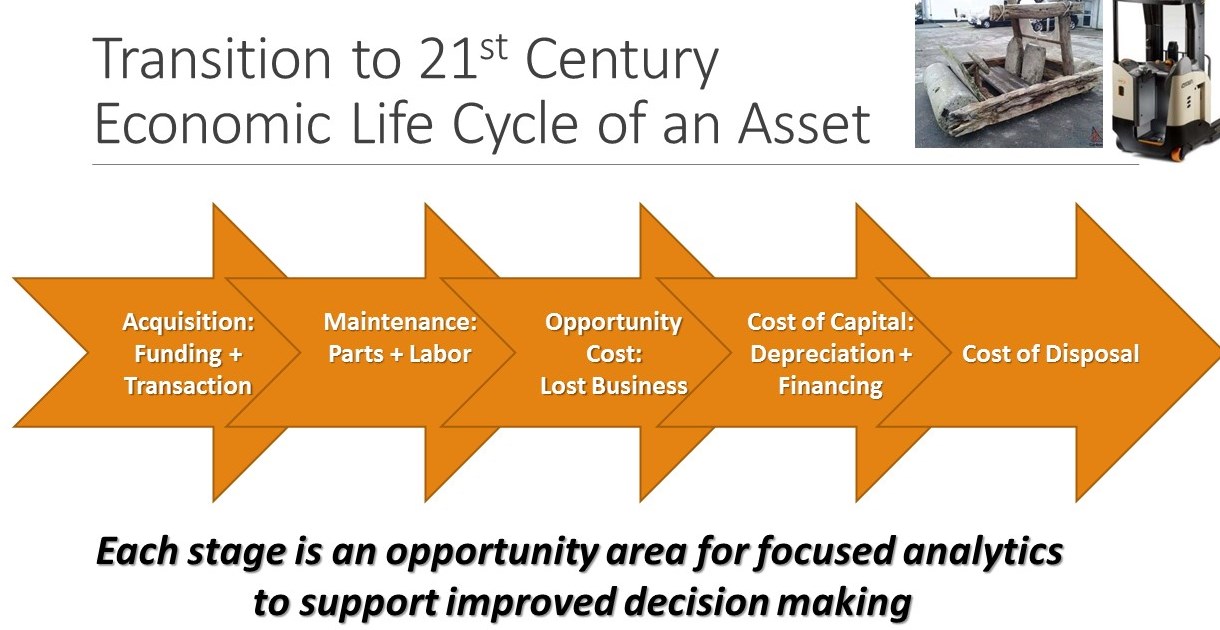
|
CAP:FER® Application Model Overview
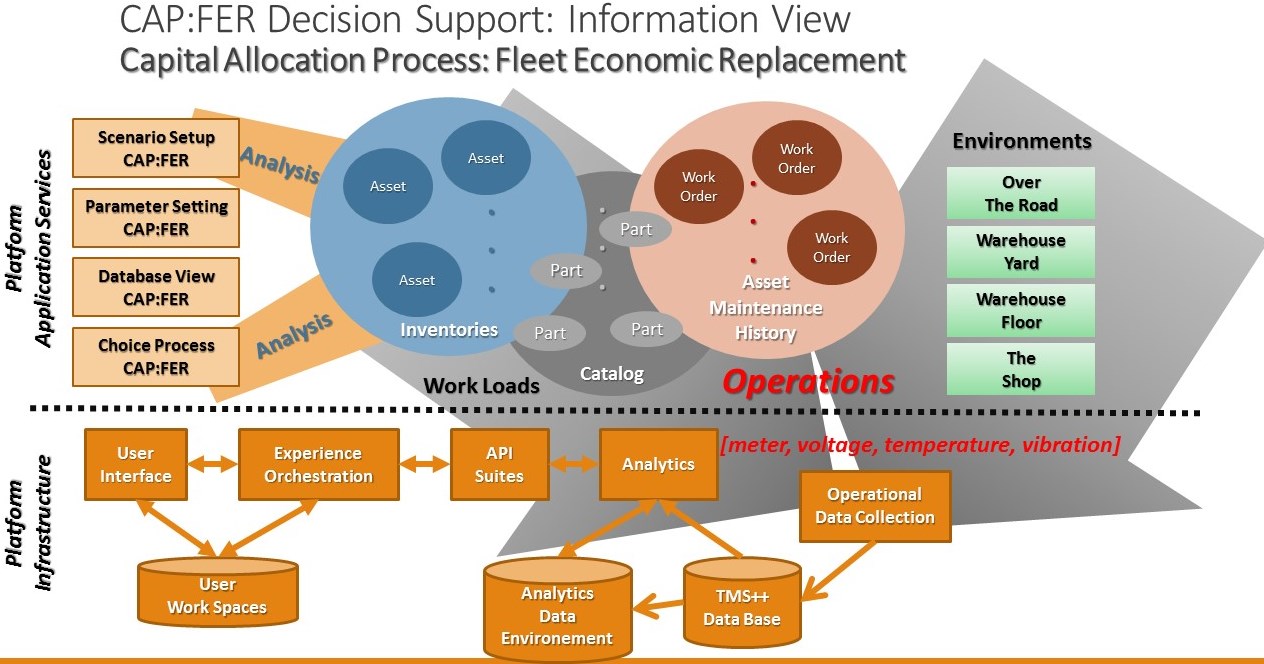
|
"Some Questions??" asked Holmes, rhetorically.
in a Time of Fleet Management and Conveyance. "Logistics, my dear Watson!", he then answered. without waiting.
How Old is the Fleet?
How Operationally Efficient is the Fleet?
How Economically Efficient is the Fleet?
The diagram at the left is the Master Business Architecture. |
CAP:FER® Application Business Process
|
(1) Choose Historical Database View Work Order History provide the necessary information to determine cost of maintenance over time.
(2) Select Periods for Consideration
(3) Choose Assets to Analyze
(4) Run SCA™ Special Dynamic Programming Algorithm
(5) Choose Preferred Options
The Capital Plan involves decisions concerning the entire fleet in the warehouse. Thus, we have the basis of a Capital Plan for the Warehouse(s). |
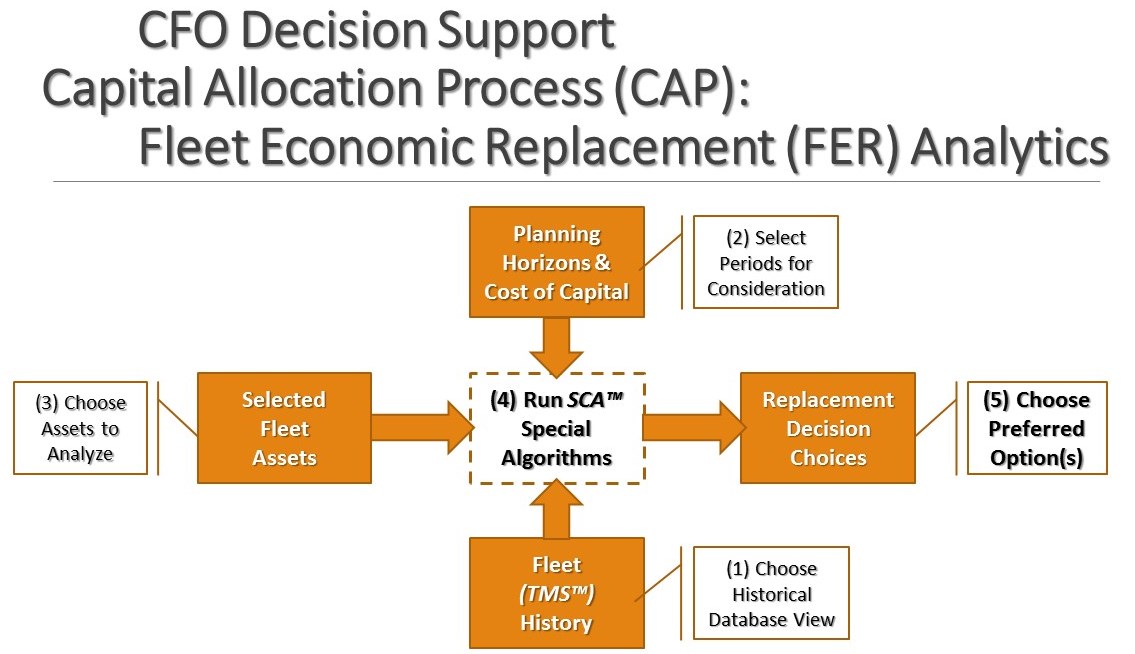
|
The Firm Foundation
That is, 'Firm' in both senses: 'solid/steadfast' and 'company/enterprise'.
A Master Infrastructure Architecture for
a Production Grade Software Defined Secure Content Aware Network
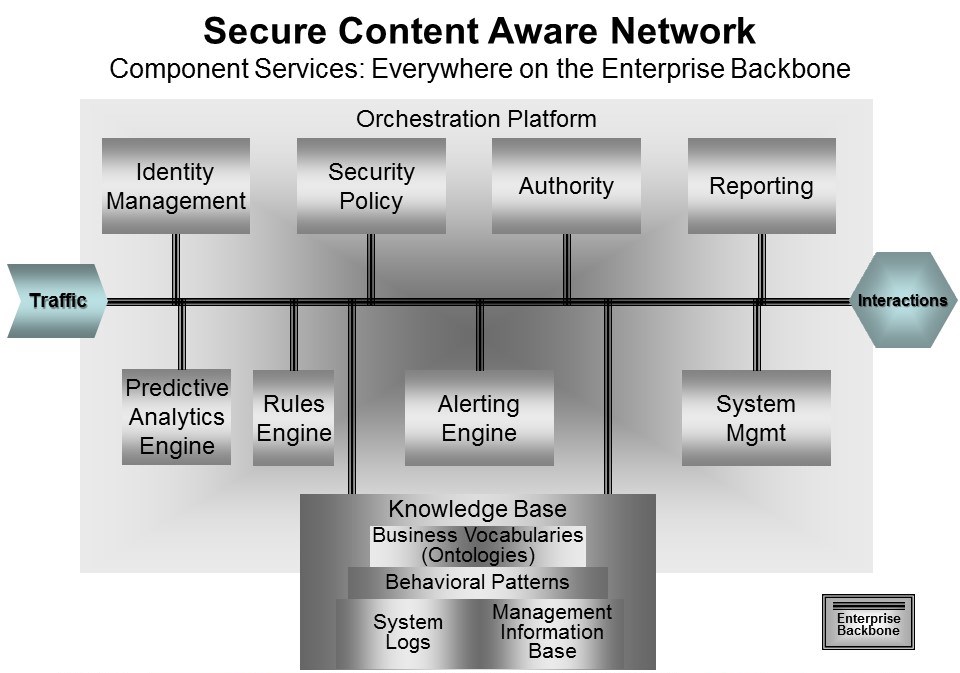 |
Over the past 20 years we've developed and maintained an
NGE SD-SCAN Strategy Engineering Notebook.
Security is managed separately from applications and is "just" a part of the infrastructure that is automatically included. "In the Container" thinking. 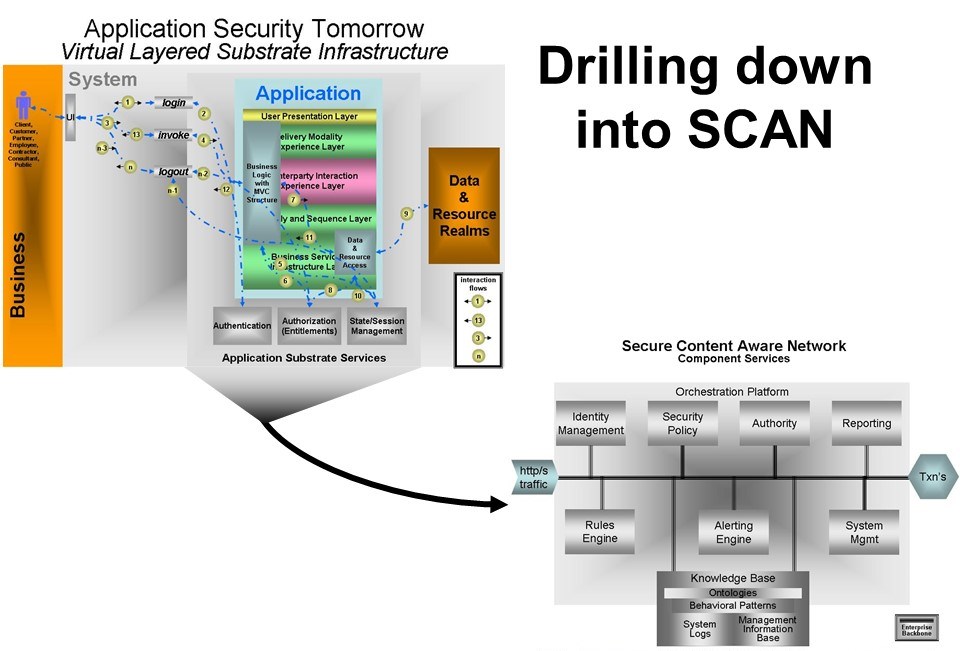
|
An Architecture for designing and developing products up and down the IoT stack
|
Proceeding Up the Stack for the Premium Value.
Locating Patterns of Control for Surrogate Device Agents is paramount.
|
[Warning: Geek Alert]
Surrogate Device Agents are Intelligent Agents, dubbed groBots™ here. As a preview to a book in progress, here is P.10 torn from the current working notebook on Intelligent Agency. It provides a view/beginning of codification of Intelligent Agents.
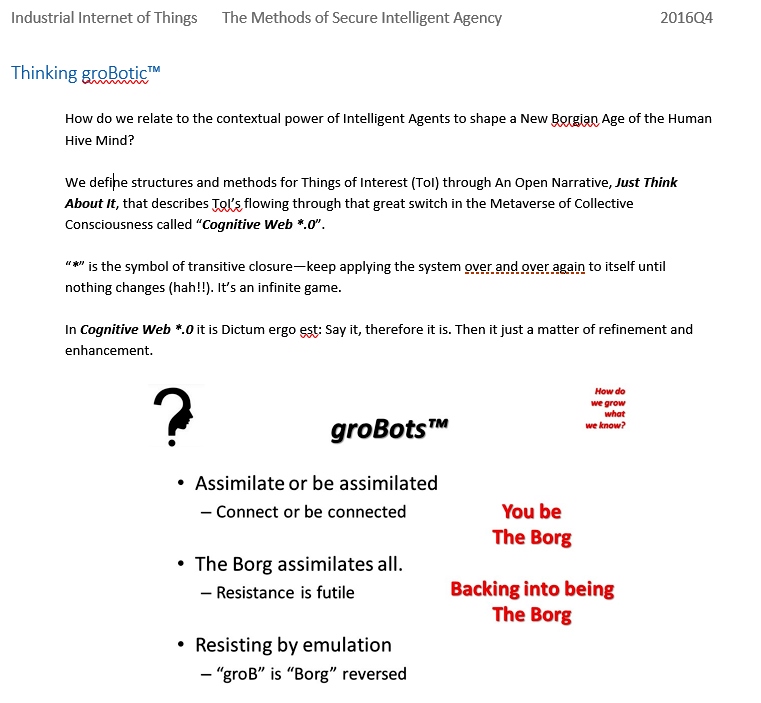
|
Why engage us?
Technology experience is broad and deep covering strategy, application development, infrastructure development, and last, but not least, training.
Success of IT actions should be a matter of maintaining up-to-date knowledge and managing options with positive expectancy--do things that have positive expected outcomes based on best information
These outcomes may not always be realized, but if they are, they contribute to value building.
Positive expectancy is a lot like Warren Buffett's Rule #1: Never lose money.
Assess capabilities of systems and people
Manage building business information systems
Define, design and execute Proofs of Concept and Pilot Projects
Our current view is that, in 2009, Clouds are in the Geoffrey Moore early adoptor stage. 2011 will be the year when Moore's Chasm will be crossed.
This implies, in Moore's terms, that 2010 is the year "Inside the Tornado" when Cloud Services providing organizations will build sustainable competitive advantage.
From a consuming organization standpoint, this translates into a cautious adoption of these old and new technologies and methods to address new issues of
internal and external IT workload sourcing. Cloud is moving towards the sourcing of workload handling on a dynamic basis.
For the two seminal whitepapers on Cloud issues:
“Are Clouds ready for Enterprise Prime Time?”
Our answer is a qualified “yes” depending on the readiness of the consuming
organization.
After all is said and done, Cloud technologies are old wine in new bottles.
This paper extends the "as a Service" concept to include Environment as a Service (EaaS).
EaaS provides the Service Level Quality demand side of the equation.
Software, Platform and Infrastructure as a Service are the supply side modalities of delivery.
Moving workloads from a private enterprise cloud to a public or hybrid cloud is then totally transparent.
This is the essence of elasticity and fulfilling the promise of the overhyped term "Cloud."
Contained in the paper is a Policy Life Cycle description that guides the requirements on tools for policy management.
To see all our available on-line resources, click here.
Business Philosophy
We are pursuaded more by 1991 Economics Nobel Lauriate Ronald Coase's Theory of "Contracts make efficient markets" that with Adam Smith's Hidden Finger.
With Adam Smith, mostly one gets one's finger pricked with his allegorical pins. With Coase, one gets demonstrable, in the small--entity to entity--efficient production. The term that best describes Coase is "Pico-Economics."
Commodity Computing: All you need is a credit card and a plan. The Cloud Computing meme is a persistent innovation driver in Data Center Optimization (DCO).
It is about transparency in Cost, Space and Time, but not in Energy.
A major impedance to DCO is screen staring by Data Center operators. We need more autonomic components that inform of remediations instead of only alerting to problems, at best.
Note well slide 10.
On the topic of Conditioning IT for Business Services in Clouds, Click here for a PowerPoint Show of Slide 13.
If you need the PowerPoint Viewer, click here
Refinement of work as part of a consulting assignment completed for Firemen's Fund in 2005-06.
Result of ten years of thinking and collaborating with many talented people.
Some Web Services Security Architectural First Principles, Philosphy 101 excerpt from Wittgenstein, Tractatus Logico-Philosophicus:
NGE Founder's last public statement at the Securities Industry Association (now Securities Industry and Financial Markets Association)
annual Technology Managers Conference in June 2003. David was head of Advanced Technology at Schwab then discoursing on the technical foundations for New Global Enterprises.
See the current Table of Contents, deliverables ETA, August 2009.
This outline will be split into two separate papers.
Securing Clouds with Open Standards, Part II: An Open Narrative Architecture
CSA Federal Cloud Security Symposium, McLean, Aug 5, 2009
The Open Narrative Framed Question for David M. Sherr's two panel discussions.
For 2009-10, The Business Case == Lower Cost Structure
For 2010-11, The Business Case == Top Line Enhancement
Sierra Ventures CIO Conference, Palo Alto, Sept 2009
Goldman Data Center Techtonics Conference, New York, Nov 2009
InterOp, New York, Nov 2009
RSA Conference, San Francisco, Mar 2010
So it is simple and very portable to any HTML 1.1 based browser, even the embeddable http Object in Turbo Pascal.
However, as we begin to deepen the information structure of this site, you will find that the "Resources: Whitepapers/Presentations" section, "Technical Architecture" subsection is not viewable in one window pane.
And, thus, it is time, in scribe like fashion, to model books as knowledge containers using folios and codices--leafed lists--not just scrolls.
Scrolls connote order and time lines. We can keep our quill pen, nonetheless. It is format not the means of description and inscription that are being updated.
Folio Books are easily accessed in the middle in random ways that scrolls are not. Quill pens work fine with both scrolls and folios. It is Web 2.0 that updates quill as a technology.
Desparately seeking redesign. But, when to do it?
The question has always been, "What functions and information do we need to deliver, NOW?"
Always, doing something rather than writing about it seemed the best way to go.
Now that the fruits of our 2004 Five-Year Strategy are becoming apparent, we are communicating with an Open Narrative.
NGE Associate/Partner Expertise and Experience
Deep business expertise with over 150 years of experience that centers on all aspects and sectors of Financial Services, Capital Markets and Investment Banking.
We have significant experience in Health Care Information Systems and large-scale Printing Systems. Most recently, now, Supply Chain Logisitics.
What is our competitive advantage?
Assisting individuals and firms to profit in the change and complexities of modern markets and technologies.
How do we help build value?
2009: The Not-So-Distant Past
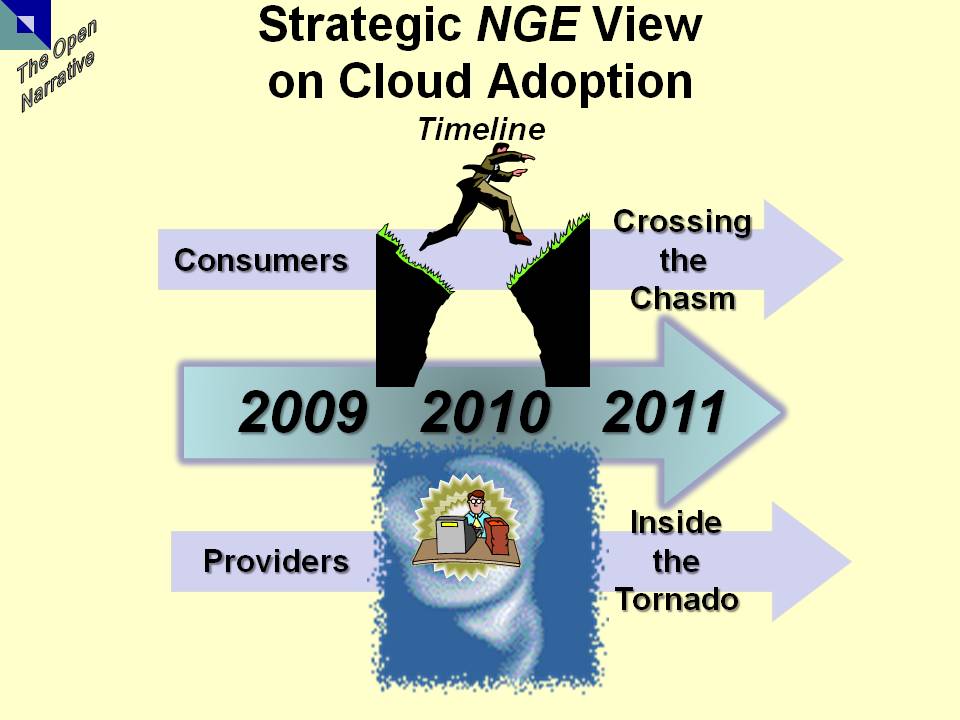
New Global Enterprises are investigating the operational readiness of Cloud Computing.
In our humble opinion, Cloud technologies are just more arrows in the quiver of IT solutions.
The current focus is on production grade Enterprise Security and Operational Monitoring.
Relevant Resources
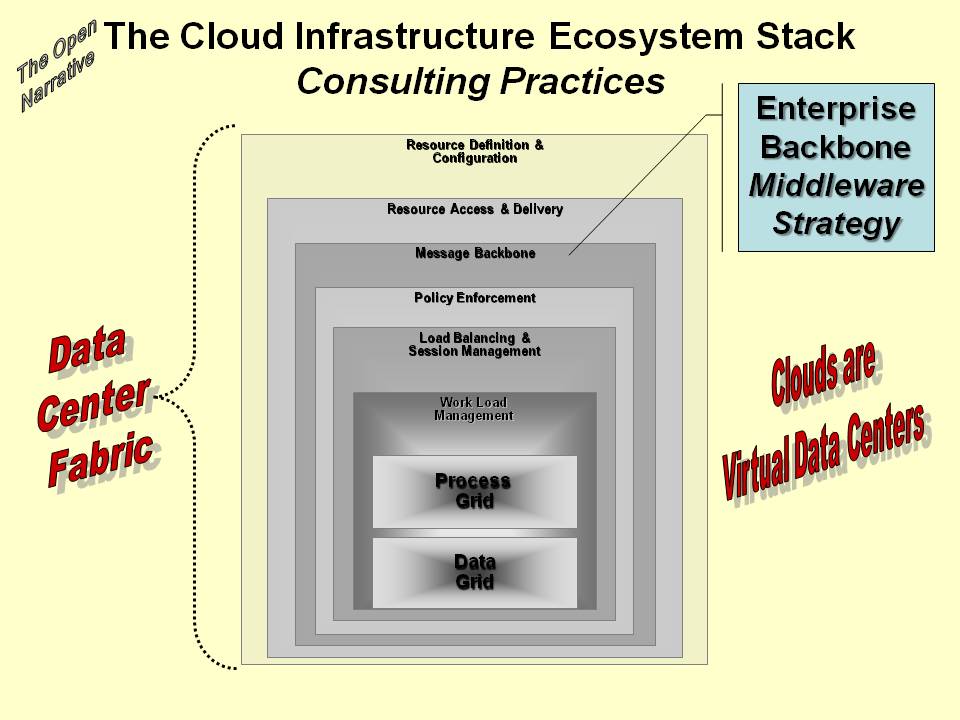
As the starting point to guide seven Proofs of Concept described in the
NGE activities whitepaper above,
the question is
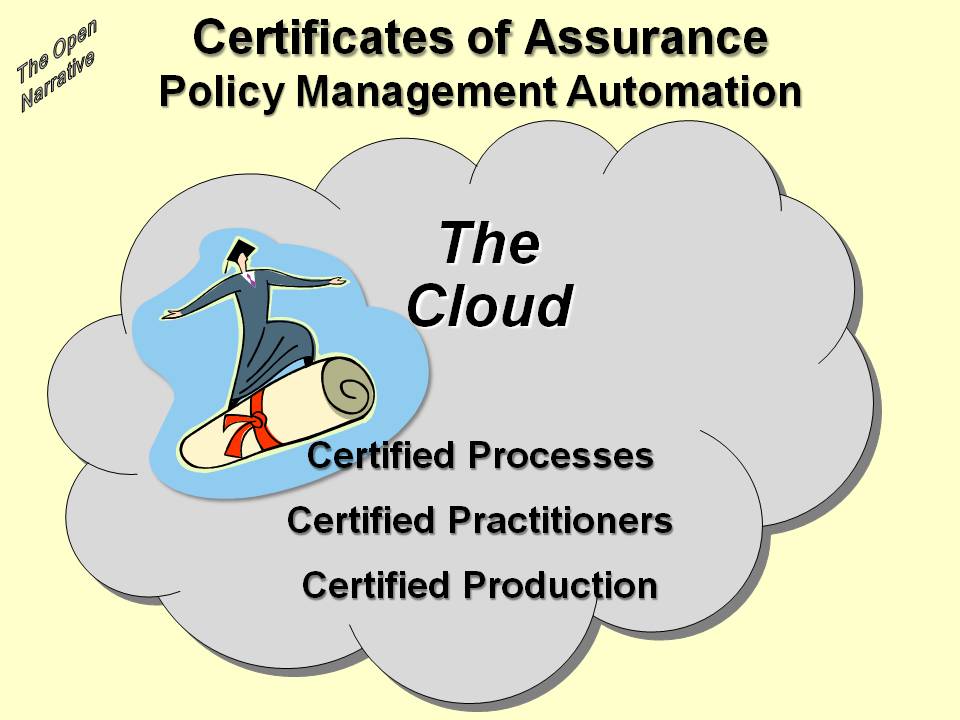
This is an overview discussion on how to use Security and General Business Policies in a
controllable fashion. This approach underpins Cloud and Enterprise solutions that use the same architecture and tools.
Resources: Whitepapers/Presentations
Below are some items extracted from the Founder's Intellectual Property grab bag (as a colleague and close friend of NGE's Founder is fond of saying).
Technical Architecture
2.014
Objects contain the possibility of all situations.
2.0141
The possibility of its occurring in states of affairs is the form of an object.
2.02
Objects are simple.
2.0201
Every statement about complexes can be resolved into a statement about their constituents and into the propositions that describe the complexes completely.
Founder’s Bio and Blog
Background on NGE's founder, David M. Sherr, and his periodic and occasional updates on issues affecting and effecting New Global Enterprises, Economics, Financial Systems, Health Care Systems, the Social and Political Scene, and, just plain interesting or fun stuff, in general.
External Publications
The NGE founder and associates are preparing a whitepaper for the Cloud Security Alliance submission
as Framework Foundation for the CSA's 2.0 Operating Guide.
We are discussing various topics of Cloud Security in the LinkedIn Cloud Security Alliance Discussion Group
Public Appearances of NGE Associates
NGE Web Site ready to morph.
Our Web Site structure is really retro. If you've gotten this far, you know that means this is a scrolling window site, with no explicit Web 2.0 enhancement.
But to its credit, there is a richness in the simplicity of pages that are dynamic in reformating to window dimensions with titled sections fitting within a viewable window pane.
Stay tuned for emerging useful Open Architectures, Business Components and Development Tools.
![]()
